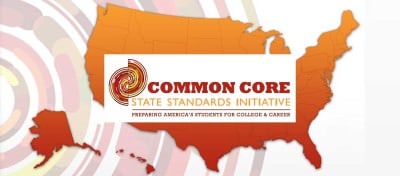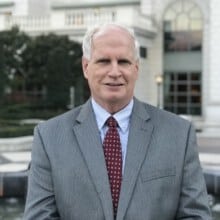- Blacks comprise 25 percent of public school enrollment; only 14 percent of public school teachers are black
- Reasons for the shortage of minority teachers are rooted in a variety of factors including fewer graduates, certification issues, and higher turnover
- The best way to boost minority student achievement is to put quality teachers in every school
The education web site EdNC.org, recently ran an article by Adam Rhew that sounded the alarm about the lack of diversity among teachers in North Carolina’s public schools.
Rhew believes this is problematic, because there are “short-term benefits to exposure to same-race teachers” for students, and that there is an “advantage” to students who “encounter teachers who look like them.”
The author cited a number of statistics, acknowledged that teacher diversity is a difficult topic to resolve and stated the “risks of leaving the imbalance as it is today, are too great for policymakers and educators to ignore.” Still, Rhew didn’t tell the whole story.
Rhew pointed to 2016-17 statistics showing that blacks comprise almost 25 percent of enrollment in North Carolina public schools, but only 14 percent of the teaching population. He also noted that Hispanic or Latinx – the new descriptor for Hispanics – students now comprise 17 percent of public school students, but just 4.9 percent of the state’s teachers.
These figures lack context, however. For example:
- The percentage of black students in NC public schools has dropped from 31.4 percent in 2003-04 to 25.3 percent in 2017-18
- White students now make up 48.4 percent of public school student population, down from 58.5 percent in 2003-04
- Asian and Hispanic student populations have been growing during that time, rising to 3.3 percent and 17.4 percent respectively
- Lower birth rates among all races and the influx of Hispanic immigrants help to explain the lower numbers and some of the trend lines
Overall school personnel demographics are more diverse
Moreover, Rhew ignores that the percentage of blacks in other school personnel categories is very near or exceeds the percentage of blacks in the overall population.
- For example, in 2017-18, 26 percent of all administrators are black—including 25 percent of all principals and 32 percent of assistant principals.
- Of those school positions classified as professional such as guidance counselors, psychologists, librarians and consultants, 21 percent are black.
- Likewise, 36 percent of clerical, service and technician positions are held by blacks.
- Blacks comprise 25 percent of overall school population and comprise 23 percent of all school employees.[i]
Why so few minorities in teaching?
Despite the gains, the differences still make us wonder why there are so few black teachers in the classroom. Over the past several decades numerous efforts have attempted to address this. While there has been some success in recruiting blacks and other minorities to prepare for jobs in the classroom, overall numbers are not close to where people had hoped they would be.
Several factors might help to explain the status quo. For starters, high school graduation rates for blacks and Hispanic students are low, which impacts the pool of potential educators. Furthermore, blacks and other minorities are leaving teaching positions at a higher rate than whites.[1]
With regard to the disparity between the growing Hispanic student population and the lack of Hispanic teachers, much of that can be explained by the rapid influx of Hispanic immigrants over the past decade. The speed with which the population grew coupled with apprehension over language and cultural assimilation also worked against the development of a natural pipeline of Hispanic teachers. [ii] According to the U.S. Department of Education, in 2002, 18 percent of students enrolled in public elementary and secondary schools were Hispanic. By 2012, that percentage had grown to 24 percent. In 2000, the percentage of Hispanic students enrolled in education majors was only 8 percent. By 2012 the number had increased to 11 percent.[iii] While there have been numerical improvements from year to year, the overall actual percentage size of Hispanics enrolled in education majors is significantly lower than the percentage of Hispanics in the overall K-12 student population.
How best to improve minority student achievement?
We can argue numbers for a very long time. When we do however, we obscure the key question: how do we improve minority student achievement? Rhew points to research and believes that is best achieved by adding diversity to the teaching force. I disagree.
I acknowledge that black students may derive benefit from having a teacher of the same race, just as other minority groups may. Rhew notes the research. However, he seems to sidestep some of the general objections. These include: the fact that benefits to minorities who have same-race teachers seem to wane over time, are greatest for those from poor or disadvantaged backgrounds and have yet to be definitively tied to quality of life and after school employment. Many important questions emerge from this discussion: How do we know gains weren’t simply a result of the quality of the teacher and had nothing to do with race? For example, could the larger gains among disadvantaged blacks merely reflect the poor quality of the white teachers in many schools? Why have other minorities (such as Asians) appeared less interested in obtaining teachers of the same race and have populations that have on average still performed well academically?
Indeed, truth be told, telling black or other minority children they need a teacher of the same race to succeed is demeaning. To say the best way to help minority students is to hire more minority teachers is misguided. It insults minorities and addresses none of the problems that contribute to the low number of minority teachers.
Understand my saying this does not denigrate the work of organizations like Profound Gentlemen (a non-profit referenced in the article that helps mentor minority teachers), whom I applaud for seeing a need and helping to meet it. My objection is in believing that such organizations offer the best solution for boosting minority student achievement statewide.
Focus should be on teacher quality
Increasing the diversity of the teaching force may be a popular view, but in my view, it is not enough. If you want to improve minority student achievement, add effective quality teachers in every classroom.[iv] Providing high quality teachers in all classrooms is an effort backed by research and results.
If parents were asked if you’d rather have a quality teacher in your son or daughter’s classroom or a teacher of the same race, I believe most parents would choose a quality teacher. This is not to imply the choice is mutually exclusive. The reality is, however, if you’re emphasizing diversity you’re not emphasizing teacher quality. Rhew identifies race as a key variable for boosting student achievement. This is not to say race is unimportant. But we must come back to the question: what is the best way to boost minority student achievement?
If teachers can engage students and communicate culturally, but don’t know the subject matter, being of the same race and having a college degree is not enough.
To boost minority student achievement, you must understand the variables that contribute to the problem. Minority student achievement is, in part, rooted in failing schools. Failing schools are often tied to lower salaries, less experienced teachers, often with emergency credentials or no regular certification. Considerable data shows that many of the failing schools are staffed by young teachers, usually with three years’ experience or less. Young teachers usually do less satisfactory jobs, and are often quick to leave challenging circumstances. When young teachers leave, they are usually replaced by other young teachers. And the cycle continues.
Hiring more black and minority teachers will, according to Rhew, help correct serious shortages. We can, however, go overboard on all the bean counting. The “right” percentages guarantee nothing.
Briefly, a number of steps can aid this effort.
First, we must improve the quality of existing teacher education programs. For too long, teaching has not attracted the top students and schools have suffered for it. How you do that might be the subject of another paper. However, better pay structures that reward performance and an opportunity to advance financially while still teaching helps, as would more autonomy in the classroom.
Improving the quality of teachers also means doing more to make average teachers better. This may take the form of mentoring or professional development. It also involves the ability to promptly remove nominal teachers with better quality teachers.
Second, unlike other professions, most teacher pay is not tied to productivity, but to years of experience. No one goes out of business if schools continue to pay ineffective and effective teachers the same salary, but policymakers and teachers take note.
Our schools need to incentivize excellence and reward good teaching. Tying pay to performance and judged by fair standards of evaluation is a place to start. Excellent teaching should be rewarded financially and bonuses or incentives should be applied for those who teach in high-need areas like troubled urban centers or chronically understaffed subjects like math and science.
Lastly, teachers should be encouraged to specialize. The average teacher does about ten different tasks during the day, some instructional, some administrative, some interpersonal. Most teachers are good at a few things and trudge through the others. The practice of having teachers carry responsibilities outside their area of expertise or specialization is at odds with many professional fields. Allowing teachers to specialize in their strengths can be done without much additional expense and can invigorate careers and reduce turnover.
How to boost minority student achievement is a chronic question facing the public schools. The causes are many, the most important of which is not all children have access to a quality teacher. While hiring more teachers of the same race can be beneficial for minority students, the best way to improve minority student achievement is to ensure all public schools have quality teachers — be they white, black or brown. The reality is teacher quality varies from school to school. Parental choice empowers parents to mitigate those problems. The lack of choice and the constant focus on race, obscures this need. It’s time to clear the fog.
Sources
[1] Retaining minority teachers in schools where most of their colleagues are white, Steve Bednar and Dora Givheva Brookings Insttitution, August 2, 2017. Available online at: https://www.brookings.edu/blog/brown-center-chalkboard/2017/08/02/retaining-minority-teachers-in-schools-where-most-of-their-colleagues-are-white/
[i] Table 16, State Summary of Public School Full-Time Personnel, Statistical Profile of the Public Schools of North Carolina. Available online at: http://apps.schools.nc.gov/ords/f?p=145:21:::NO:::
[ii] “The State of Racial Diversity in the Educator Workforce” U.S. Department of Education, United States Government. Available online at:
[iii] “The State of Racial Diversity in the Educator Workforce” U.S. Department of Education, United States Government. Available online at:
[iv] An Effective Teacher in Every Classroom, Katie Haycock and Eric Hanushek, Education Next, Summer 2010. Available online at: http://educationnext.org/an-effective-teacher-in-every-classroom/
[v] In schools, Teacher Quality Matters most, Dan Goldhaber, Education Next, Spring 2016, Available online at: http://educationnext.org/in-schools-teacher-quality-matters-most-coleman/
Editor’s note: This perspective was originally published by the Civitas Institute. It has been posted with the author’s permission.
Recommended reading




